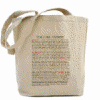
We're an all volunteer website and need your help to keep going. Here are five ways you can contribute: 1 Donate 2 Buy something 3 Submit a story 4 Volunteer 5 Advertise

New in the gift shop, virtualitalia.com logo wear and use items! 
|
PLEASE NOTE: We are experiencing unexpected
technical difficulties caused by our web host. We apologize for
the inconvenience. During your visit you may experience service
and page interruptions - we are in the process of fixing everything and hope to be
fully back on our feet soon.
genealogy lecture notes
Many years ago (1993) I had the opportunity to attend a genealogy seminar and the guest speaker was noted Italian researcher and author John Philip Colletta, Ph.D. As this was my first genealogy seminar, I was unaware at the time the valuable information I would be taking home with me. The subject of Mr. Colletta's presentation was: "Climbing the Family Tree: Researching Your Immigrant Ancestors in America and Overseas." We were given an outline that covered the topics for the day as well as an excellent reference bibliography, and handwriting samples.
The four W's
We next moved to the next phase of the discussion which was the starting point for researching. Sometimes the obvious isn't so. Knowing your ancestors full name, along with the town they were born in and approximate date of birth is where most of us begin. This information can be found in birth, baptismal, marriage, and death records. Most of the time these records accompanied the immigrant to America. But many times for one reason or another this was not the case.
Explore Living
Memories During your interview, show interest in the relative you are interviewing and try to make them as comfortable as possible. Some people have trouble talking to a machine. Ask specific questions making them simple to understand, and listen to their responses. Use props such as old photos, family heirlooms, charts, etc. and be sensitive to your family member. If they are having trouble remembering an event, let them know this is ok, and you can always talk to them about it another time. A good tip here: Conduct your interview in a conversational way and not just fire questions at your relative. Don't interrupt when an elder is "on a roll" - you can always note your thought and go back to it later. Also, take note of of any other names that may be mentioned during your interview as they may be clues to finding more relatives. After meeting with your elder family member, be sure to thank them and stay in touch with them as they too like to know they haven't been forgotten. Group interviews can be conducted at family reunions and good preparation will make this type of interview a great success! The interviewing aspect of genealogy can be very rewarding, but remember to tell your relatives something before you ask for something. Keepsakes and family heirlooms such as passports, U.S. citizenship certificates , military service papers, steamship ticket stubs, and family photographs can be used as props when conducting your interview, so keep this in mind.
Published Materials
Available in Libraries We then learned about resources available for researching a place of origin overseas. Ethnic genealogy societies exchange information and will even assist in translating letters. Surname dictionaries will explain the origin of family names (an example of this would be "Our Italian Surnames" by Joseph G. Fucilla.) National biographies of European countries are written in the language of that country. Published genealogies usually deal with royalty and nobility as well as listing the closest port near the town or village. A Gazetteer will list all the communities, co-ordinates, population as well as the founding of the town. A town's local history will also be profiled. YES, we did have a couple of breaks during the seminar!! The areas I will wrap up with for the first half of the seminar notes deal with many of the records I'm sure you are familiar with. The Federal Records housed at the National Archives include census, ship's passenger lists, and naturalization records. These are also known as 'key records' and I will go into more detail about them in the second half of my seminar notes next month. " One short note here about the Federal Census: The 1930 census will be available April 01, 2002 and you will find a lot of information (32 questions). To find out about the information included on this census, please go to: National Archives and Records Administration. Key State Records have information on colonial censuses, state censuses, vital records, and courthouse records. And key local sources include cemetery monument inscriptions and records, English and foreign language newspapers, immigrant family church records, and other miscellaneous records. An example was then given - information on "John Smith" was discovered using the following sources: 1900 Federal Census, Army discharge papers, oral interview, map of his ancestral town, local history of Buffalo, church records, 1885 N.Y. State Census, real estate records, and naturalization papers. By combining all the information contained from these sources, one is able to see the pieces of a puzzle beginning to fit. Ok..everyone - time for LUNCH !! When we return (next month) we will conclude the afternoon portion of the seminar I attended.
©Deborah K. Millemaci - 2002
|
© 1998-2005 by virtualitalia.com unless otherwise noted

